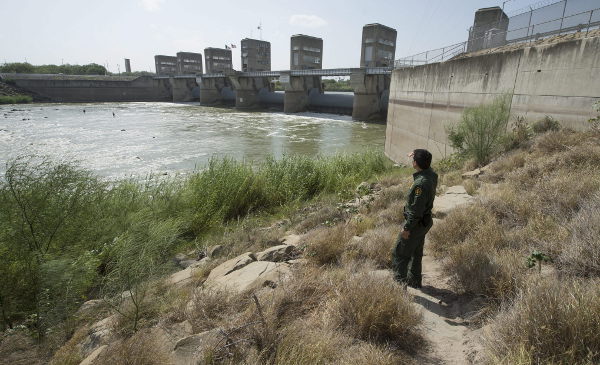-
Gallery of Images:

-
Books shelved as middleeasthistory: A Peace to End All Peace: The Fall Of The Ottoman Empire And The Creation Of The Modern Middle East by David Fromki Every single one in the ottoman empire. He then turned his attention to the majorly Shiite Persian kingdom. He provoked the Shah into war by sending him a mashup of Koran verses, newspaper clippings, song lyrics, and sarcastic lines (mostly he came up with himself); a mixture of angry rants and death threats. The exact origin of the word Bangla or Bengal is unknown. According to Mahabharata, Their empire was ruled from their capital, Vikrampur History of Bangladesh, (Vol. Asiatic Society of Bangladesh, 1997). See also: Maratha Empire, Kingdom of Mysore, Hyderabad State, Sikh Empire, and Durrani Empire India in 1760 A. The postMughal era was dominated by the rise of the Maratha suzerianity as other small regional states (mostly postMughal tributary states) emerged, and also by the increasing activities of European powers (see colonial era below). The Ottoman Empire entered the First World War in 1914 on the side of the allied powers and emerged defeated from the war in 1918, compelled to sign the Mondros Armistice on October 30, 1918. Under the terms of this Armistice, the territories of the Ottoman Empire were. Born November 6, 1494, off the Turkish coast of the Black Sea, Suleiman the Magnificent became the sultan of the Ottoman Empire in 1520, heralding the Golden Age of the Empire's long history before his death on September 7, 1566. Sharif Hussein bin Ali, was initiated by the Arab Revolt. Gain independence from the Ottomans and the stretches of Aden in Yemen from Aleppo in Syria to form a single Arab state was the main objective of the rebellion. I think as far as the Ottoman Empire early in. The Ottoman Sultan Suleiman the Magnificent, awaits the arrival of his Grand Vizier Pargal Ibrahim Pasha at Buda, in the year 1529. Pargal Ibrahim Pasha was the boyhood friend of Suleiman. Ibrahim was originally a Christian Greek from Parga, Epirus, [57 [58 and when he was young was educated at the Palace School under the devshirme system. The Imperial Women and Harem in the Ottoman Empire Tlay Ylmaz The Imperial Women and Harem in the Ottoman Empire Meaning of the Harem word Harem, an Arabic originated word, is defined in dictionaries as a temple or a sacred area in where public accessing is. This documentary describes the life of pioneer of Ottoman Empire Ertugrul Gazi who was the father of Osman I (Osman Gazi the founder of ottoman empire). In this part we discussed the history of. A good example of German mail close to the time of the British offensive for the Battle of Jerusalem against the Ottoman Empire that developed from 17 Nov 1917 just 3 weeks after this card was written Suleyman the Magnificent ruled the Ottoman Empire for 46 years between 1520 1566 and doubled his territory. This was a rising period for Istanbul, as it was for the whole Empire. Many valuable buildings were constructed during this period which survived until our days with no or little damage thanks to the great architect Sinan. RELATION WITH OTTOMAN EMPIRE OF AKBAR: In the year 1555, while Akbar was still a child the Ottoman Admiral Seydi Ali Reis visited the Mughal Emperor Humayun. The Ottoman Empire was an empire which lasted from 27 July 1299 to 1 November 1922 (623 years), when the Sultanate was abolished. The Ottoman Empire was one of the lasting empires in history; such that the Ottoman State, its politics, conflicts, and cultural heritage in a vast geography provide one of the longest continuous narratives. History Renaissance for Kids Islamic Empire The Ottoman Empire ruled a large portion of the Middle East and Eastern Europe for over 600 years. It first formed in 1299 and finally dissolved in 1923, becoming the country of Turkey. Rise of the Ottoman Empire The Reign of Sultan Suleyman Kanuni. His reign is seen as a golden age of Ottoman and Islamic history. Even nonMuslims acknowledged the glory of the Ottoman Empire as they nicknamed Suleyman the Magnificent, while among Muslims he was known as Kanuni the Lawgiver. A map of the Ottoman Empire showing the size of the. The Pala Empire was a dynasty in control of the northern and eastern Indian subcontinent, mainly the Bihar and Bengal regions, from the 8th to the 12th century. The name Pala ( Modern pal ) means protector and was used as an ending to the names of all Pala monarchs. The Ottoman Empire was one of the largest and most influential empires in world history. Its reach extended to three continents and it survived for more than six centuries, but its history is too often colored by the memory of its bloody final throes on the battlefields of World War I. Books shelved as ottomanempire: Osman's Dream: The History of the Ottoman Empire by Caroline Finkel, A Peace to End All Peace: The Fall Of The Ottoman E In this episode, we explore the imagining of the Muslim World as a concept, tracing its early origins in the history of colonialism and the late Ottoman Empire. Young Turk revolution took place in 1908. 1878 is going to be suspended and reinstated the parliament and the constitutional era of the Ottoman Empire is the second. This is an event during the fall of the Ottoman Empire. Turkish nationalist, secularist pascatyapanthi, minorities such as Greeks, Armenians and several other reformists from the parliament Sleyman the Magnificent, byname Sleyman I or the Lawgiver, Turkish Sleyman Muhteem or Kanuni, (born November 1494April 1495died September 56, 1566, near Szigetvr, Hungary), sultan of the Ottoman Empire from 1520 to 1566 who not only undertook bold military campaigns that enlarged his realm but also oversaw the development of what came to be regarded as the most characteristic. PARGALI IBRAHIM PASHA HISTORY Ibrahim was a Greek born in 1493 to Christian parents, in Parga, Epirus, modern Greece, then part of the Republic of Venice. He became Ottoman empire's Grand vizier in 1525 died (executed)on 15 march, 1536. The Ottoman empire and Napoleon: During the 18th century Turkish involvement in European affairs is limited mainly to the immediate neighbours. There is a succession of wars with Russia and constant adjustment to the frontier with Austria in the Balkans. Ottoman Empire The Ottoman Empire was a state that occupied southeastern Europe, western Asia and northern Africa between the and early centuries. The Ottoman empire was the pioneer in using gunpowder firearms. NU 1st Year HonoursAll Subject Syllabus. History of Bangla LiteratureII, First part of Modern AGE ( ) Shaw, Stanford J. , History of the Ottoman Empire and Modern Turkey, London, Reprint, 1978 Smith, Wilfred Cantwell. , Islam in Modern History, Princeton, 1957. The decline of the Ottoman empire has deep roots beyond one ruler or the other namely the Janissaries and the religious establishement attached to them (at that time the religious establishment was still independent from sufi orders aligned with the Janissaries). Watch videoKsem achieved power and influenced the politics of the Ottoman Empire when she became Haseki Sultan as favourite consort and later legal wife of Ottoman Sultan Ahmed I (r. ) and Valide Sultan as mother of Murad IV (r. ), and grandmother of Mehmed IV (r. To the degree that the Ottoman governors were able to exploit Mamlk divisiveness, they were able to retain some degree of influence in the government of Egypt. But near the end of the 17th century, when Ottoman power was in decline throughout the empire, the Mamlks once again held virtual control over the army, the revenues, and the government. Suleiman I ( ) was the tenth ottoman sultan, known to the Turks as Kunani, or lawgiver, and to the Western historians as the Magnificent, he ruled the. A Magnificent Monarch: Suleiman TheLawmaker of the Ottoman Empire In Suleimans day, the Ottoman empire led the world in riches and learning, and the. Throughout its history from the 1300s to the early 1900s, the Ottoman Empire was a strongly Muslim state at its core. Islamic law and ideas formed the basis of society, law, and government. Ottoman sultans saw themselves as the protectors of the Muslim world. The Ottoman Empire reached its peak in size and splendor under the sultan called Suleiman the Magnificent, who ruled from 1520 to 1566 and was known to the Turks as Suleiman the LawGiver. But from the middle of the sixteenth century on the empire began to decline. From, the Ottoman Empire was ruled by Suleiman I, who many claim was the greatest Sultan in history. He was also known as Suleiman the Magnificent or Kanuni The Lawgiver. During his time in power, he made an impact on the history of many countries in Europe and the Middle East. The loss of political independence condemned Syria, Palestine, Egypt, and Iraq to becoming a backwater of the Ottoman Empire, and the rich libraries of the central Arab lands provided the Ottoman elites in Istanbul with a hitherto inaccessible wealth of manuscript books. This documentary describes the life of pioneer of Ottoman Empire Ertugrul Gazi who was the father of Osman I (Osman Gazi the founder of ottoman empire). The history of the Ottoman Empire during World War I began with the Ottoman surprise attack on the Russian Black Sea coast on 29 October 1914. Following the attack, Russia and its allies, France and Britain, declared war on the Ottomans. Brief History of Ottoman Empire: Origins. The Ottoman state began as one of many small Turkish states that emerged in Asia Minor during the breakdown of the empire of the Seljuk Turks. She achieved power and influenced the politics of the Ottoman Empire through her husband and played an active role in state affairs of the Empire. Pargal Ibrahim Pasha On the diplomatic front Ibrahim's work with Western Christendom was a complete success. Perhaps most of all, Akbar the Great showed the rulers of all nations everywhere that tolerance is not a weakness, and openmindedness is not the same as indecisiveness. As a result, he is honored more than four centuries after his death as one of the greatest rulers in human history. See the rise and fall of the Ottoman Empire. This video makes distinction between the actual empire, vassals, and tributaries. Follow EmperorTigerstar on Twitter: . \r \r hey there today i talked about Short History of the Ottoman Empire and the last legacy! , the images of the ottoman empire are. The devshirme system introduced in the 14th century compelled nonMuslims in parts of the Ottoman Empire to hand over some of their children to be converted to Islam and work as slaves. By becoming the first official wife of an Ottoman sultan and starting the period called the Sultanate of Women with her influence, Hrrem laid the ground for other powerful women in the empire. Now, her successor is on our screens in Magnificent Century: Ksem, which follows the equally glorious Ksem Sultan, played by Beren Saat. Indian Muslims, Ottoman Empire and Caliphate during Colonial Period Salih Pay Associate Professor Department of History of Islam, Faculty of Theology Uluda University, Bursa Turkey Since Ottoman Empire had the title of caliph, affinity between Indian Muslims and The Ottoman Empire (tmn; Ottoman Turkish: , Devleti Aliyyei Osmniyye, Modern Turkish: Osmanl mparatorluu or Osmanl Devleti) which is also known as the Turkish Empire or Turkey, was an empire founded in 1299 by Oghuz Turks under Osman I in northwestern Anatolia. With conquests in the Balkans by Murad I between 1362. Islamic Tolerance: NonMuslim Rights in the Ottoman Empire. Source: Lost Islamic History Much like previous Muslim Empires, the Ottomans showed great toleration and acceptance of nonMuslim communities in their empire. The Last Great Caliph: Abdlhamid II Throughout Islamic history, one of the uniting aspects of the Muslim world was the caliphate. After the death of Prophet Muhammad, his close companion, Abu Bakr, was elected as the first khalifah, or caliph, of the Muslim community. The Byzantine Empire, or Eastern Roman Empire, was the Roman Empire during the Middle Ages, centered on the capital of Constantinople, and ruled by emperors in direct succession to the ancient Roman emperors..
-
Related Images:











